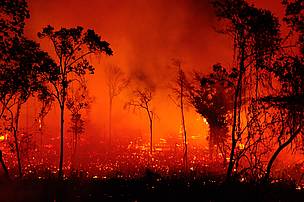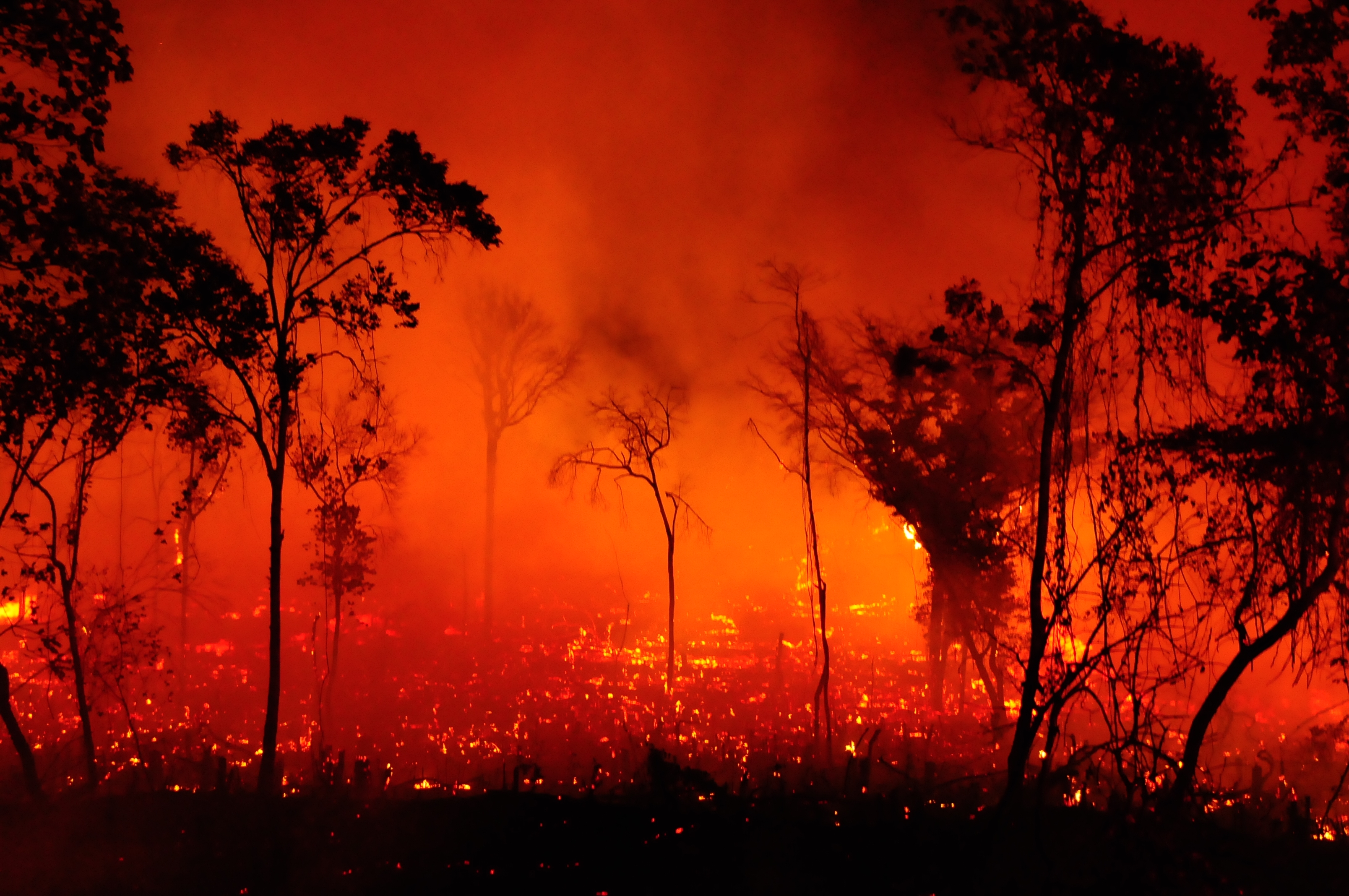Brazil in flames: Pantanal sets record fires while the government denies the evidences
outubro, 02 2020
In the 30 days of September, the Pantanal accumulated 8,106 fire outbreaks, exceeding by 35% the historical record of 5,993 fire outbreaks detected in August 2005.
In the 30 days of September, the Pantanal accumulated 8,106 fire outbreaks, exceeding by 35% the historical record of 5,993 fire outbreaks detected in August 2005By Jaime Gesisky
While the President of Brazil, Jair Bolsonaro, was speaking at the opening of the 75th General Assembly of the United Nations (UN), the National Institute for Space Research (Inpe) -which generates the official data of fires in the national territory- was detecting fires in record numbers in the Pantanal -the largest floodplain on the planet.
In his UN speech, Bolsonaro strove to give inaccurate figures and blame indigenous people and NGOs in an attempt to confuse the international audience. The Brazilian president chose to say that the country is a victim of "one of the most brutal disinformation campaigns about the Amazon and the Pantanal". It is not what the satellite monitoring data says.
According to Inpe, in the 30 days of September, the Pantanal accumulated 8,106 fire outbreaks, exceeding by 35% the historical record of 5,993 fire outbreaks detected in August 2005. It was the largest number of fire outbreaks since the beginning of Inpe's monitoring in 1998. In 2020, fire outbreaks in the region already total 18,259, triple of the number observed in 2019.
Flames in the Pantanal have already devastated around 3.4 million hectares since the beginning of the year, which corresponds to 23% of the biome. Endemic species of animals and plants may have been lost forever.
"It was a repeat of what had already happened last year, a tragedy announced by experts in a context of high temperatures, drought, deforestation and disobedience to environmental laws", evaluates Mariana Napolitano, Science Manager at WWF-Brazil.
In the Pantanal, fire outbreaks started to grow before the dry season -since March. And even with the government's ban on the use of fire at the beginning of the second half of the year, the number of outbreaks per month has only increased. The ban also applies to the Amazon.
No law
The fire which was initiated in only nine farms in the Pantanal -even under prohibition- consumed 141,000 hectares of the biome, according to the Federal Police in the context of Operation Matáá, in an attempt to punish the offenders.
In the Amazon it was no different. The region that made news all over the world in 2019 because of arsons has also had a high number of fires in 2020. In August this year, there were around 30,000 thousand fire outbreaks. September was at the same level (32,000), that is, a value 60% above that registered in September 2019.
In the Amazon, fire comes as a result of deforestation, which produces plentiful material (felled trees and other types of biomass). Most of the time, someone starts combustion -usually a way of "cleaning" the area to receive grass seeds, and then cattle.
Without control, the burning can become a forest fire and reach large areas. It happened in 2019 and was repeated in 2020, even with the use of the Armed Forces to contain deforestation and environmental crimes. The presence of the military in the region - which is expected to continue until 2022 - has not delivered the promised results, despite the massive resources allocated by the National Congress for the work of the Armed Forces in the fight against illegal activities in the region.
The data show that deforestation and burning continue in high levels in the Amazon when looking at the entire historical series of monitoring by Inpe or by external systems -including NASA and other international platforms that provide data that confirm what the official Brazilian institute says. Satellite data monitored by NASA shows that, this year, 54% of the fire outbreaks in the Amazon originated from deforestation.
Impacts on biodiversity
The images of blue macaws, alligators and jaguars calcined in the fires of the Pantanal this year went around the world. The sad images, however, does not reflect the extent of the fire's impacts on biota and water resources. The losses will be measured with the support of WWF-Brazil, which supports studies by a UFMT (Mato Grosso Federal University) research group to assess the impact of fire on the fauna of the Pantanal. The work will be developed by researchers, using the scientific methodology adopted by Embrapa-Pantanal, a corporation linked to the Ministry of Agriculture, Livestock and Supply and which since the 1980s has developed research to understand the socio-economic and environmental complexity of the region.
"The number of animals found dead surprises even the most experienced specialists, however there are also many small animals sheltered in cavities in the soil and areas less affected by fire, as well as large animals that managed to escape, sheltering in unburned areas, which now circulate in search of shelter and food ", says Mariana Napolitano.
According to her, the soil in the Pantanal, very rich in organic matter, may continue to burn for several days, causing accidents to animals and people, and may resurface if there is fuel to spread the fire.
Animals that managed to take shelter or escape from the fire still suffer from a lack of food, as the vegetation that provides leaves and fruits is dry, or definitely dead, in the case of the species most sensitive to exceptionally high temperatures.
What WWF-Brazil is doing
In the Amazon
Since August 2019, WWF-Brazil, with support from the WWF Network, has been reinforcing its actions to combat fires and strengthen territorial surveillance in the Amazon. The projects have already reached more than 93 million hectares of land -an area equivalent to more than 18% of the Legal Amazon and larger than the sum of the territories of France, the United Kingdom and Denmark.
Since then, in order to carry out this work, partnerships have been signed with 23 civil society organizations and with nine government agencies, such as the Amazonas State Secretariat for the Environment, the Acre State Secretariat for the Environment and the Acre's Environmental Police.
The actions, which were carried out on 135 indigenous lands and conservation units, have already directly benefited more than 69,900 people and, indirectly, more than 3.7 million. More than 7,000 pieces of equipment have already been donated and 54 trainings, courses, workshops and assemblies have been carried out with a total of 2,945 participants.
In the Pantanal
WWF-Brazil has been running projects in the Pantanal for 20 years, in partnership with local organizations. In view of the environmental crisis caused by burning in the biome, actions involving the sending of protective equipment and training for brigade members have been prioritized, in addition to the delivery of basic food baskets to local communities.
The actions also include logistical support for social organizations that operate in the Pantanal, in addition to articulations with local entities and governments, with the aim of containing the environmental disaster in the biome.





